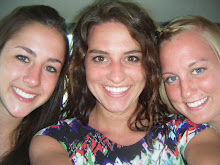 In my Block A class, we are talking about helping kids read more deeply into books. One way to help students get the most out of their literature is encouraging them to ask questions about the book. This book would be a good choice for scaffolding this process. I caught myself wondering, is there really a night train? Does William really think he is getting on a train? Or is he just asleep in his bed? Is this a one-time trip on the night train, or does William ride it every night? All of these questions would be fun to explore with children. It would be interesting to see if they read into the story literally or symbolically. What does the night train mean to them?
In my Block A class, we are talking about helping kids read more deeply into books. One way to help students get the most out of their literature is encouraging them to ask questions about the book. This book would be a good choice for scaffolding this process. I caught myself wondering, is there really a night train? Does William really think he is getting on a train? Or is he just asleep in his bed? Is this a one-time trip on the night train, or does William ride it every night? All of these questions would be fun to explore with children. It would be interesting to see if they read into the story literally or symbolically. What does the night train mean to them?The story is a fun one for kids. The text rhymes, lightly dancing off the tongue. The tale follows William, who boards the night train amidst "zookeepers, shopkeepers, writers and fighters" and "babies in bundles" all searching for sleep. William, though, is wide awake. He wants to explore the train, crawling over the sleeping passengers, looking forward to tomorrow. Not only is the message fun, but the text itself is fun. The font varies in size and swirls around the page in the shape of the smoke emitting from the train's smokestack.
Just as the story was enchanting, so too were the illustrations. Though it is a story about nighttime and "sleepyheads," every page is filled with bright blues, yellows, and greens. Toward the end of the book, the illustrations start including fluffy white sheep. The first time through the book I did not realize their importance. Looking back, though, I know they arrive when William starts to finally feel the weight of sleep behind his eyes. Of course, sheep are traditionally counted by people to help put them asleep. They work even for wide awake William.

No comments:
Post a Comment